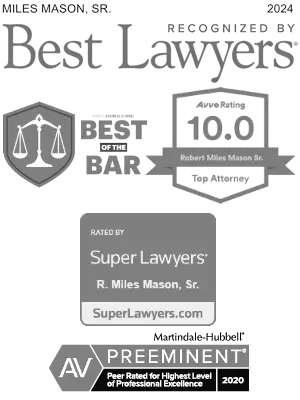Uncovering Hidden Income in Tennessee Divorce by Imputing Income
- At April 01, 2012
- By Miles Mason
- In Alimony, Child Support, Divorce, Forensic Accounting, Home
 0
0
Uncovering Hidden Income in Tennessee Divorce by Imputing Income. In Tennessee divorces, uncovering hidden income can include imputing income with the assistance of a forensic accountant in child support and alimony issues.
Uncovering Hidden Income in Tennessee Divorce by Imputing Income
Clients usually know right off the bat when income determination is going to be an important issue. For obvious reasons, it’s most often the less propertied, supported spouse raising the concern. In those cases, temporary support also almost always seems to be an issue, and temporary support is always important because it’s early in the case. And if it’s mishandled, the case will become much more difficult for the supported spouse. What’s the easiest way temporary support gets bungled? The supported spouse can’t prove what the supporting spouse earns. The risk of not being able to prove income is always highest early in the case before the best documents have been exchanged or researched. Depending on the level of conflict and complexity of earnings, determination of income affects the following:
1. temporary support;
2. alimony; and
3. child support.
Alimony focuses on need and ability to pay. Ability to pay means available cash after taxes and expenses. Determining the obligor’s ability to pay begins with income determination.
Imputed income is one of the most important, but challenging, calculations to get into evidence. In general, there are three ways to impute income:
1. use of a Detailed Transaction Listing and Analysis;
2. proof of luxury spending which is clearly inappropriate for the amount of claimed income; and
3. use of the Net-Worth Method.
In the context of imputing income, the Detailed Transaction Listing and Analysis can be used in two ways. First, you can add up all deposits to calculate actual after-tax earnings and compare that amount to claimed earnings. Second, you can use it to compare actual spending with the obligor’s claimed after-tax income. The forensic accountant can determine whether the expenses greatly exceed known sources of funds. If the proven lifestyle of the parties during the marriage is greater than known sources of income, you may be able to establish that the claimed income has been understated. The predictable problem with this method can be disproving the obligor’s explanation for spending more money than what has been, or is, claimed as income. Usually, the obligor spouse’s claim is that the divorcing parties overspent.
Thinking an additional move ahead on the chessboard, if the result of the claimed overspending is a bunch of debt, well, that explanation might stand unless the forensic accountant can disprove it. On the other hand, if there is little or no debt, the forensic accountant must determine whether cash assets, investments, or savings were encroached upon. Regardless, thoroughly reviewing all financial documents is necessary for disproving the obligor’s claimed explanation. The forensic accountant must have sufficient relevant documents accounting for all transactions. If there are sufficient relevant documents, the forensic accountant may be able to testify that, to a reasonable degree of accounting certainty, there must be other income to explain the spending pattern.
Proof of luxury spending can be straightforward. It begins with an important, but arguable, assumption: “People spend money they can afford to spend.” Rolex markets its watches, like many name brands, to symbolize success and affluence. The general consensus is that luxury purchasing spouses who claim during the divorce to be not as wealthy as they otherwise appear to be are apt to fudge on claimed income. That fudging is more critically viewed in child support matters than alimony cases because the children are seen as victims. In any courtroom, the more outrageous the luxury item, the more difficulty the obligor may have claiming impoverishment.
From a different angle, proof of luxury spending can be very similar to proving unrecorded income in the form of perks paid by the employer. For example, some doctors’ medical practices make lease payments for doctors’ luxury cars. Medical practices deduct the lease payments and, for whatever reason (legally or not), the lease payments are not included on the doctor’s W-2 or 1099. The amount paid by the practice could be more than $1,000 per month and should be included in the doctor’s income considered for support.
This blog post is an excerpt from The Forensic Accounting Deskbook: A Practical Guide to Financial Investigation and Analysis for Family Lawyers. Reprinted by permission. Copyright © 2011 American Bar Association. All rights reserved. No part of this publication may be reproduced, stored in a retrieval system, or transmitted in any form or by any means, electronic, mechanical, photocopying, recording, or otherwise, without the prior written permission of the publisher. Footnotes may be omitted from the original text.
To learn more, see Hidden Income and Hidden Assets in Tennessee Divorces.
Miles Mason, Sr., JD, CPA practices family law exclusively and is founder of the Miles Mason Family Law Group, PLC, in Memphis, Tennessee. Miles is the author of The Forensic Accounting Deskbook: A Practical Guide to Financial Investigation and Analysis for Family Lawyers, published by the American Bar Association. The Forensic Accounting Deskbook teaches lawyers, forensic accountants, and divorcing spouses how to uncover hidden income and discover hidden assets in complex divorces involving business owners and highly compensated corporate executives. The author, Miles Mason, Sr. has presented numerous seminars on divorce, family law, forensic accounting and business valuations at national and regional conferences for judges, divorce and family lawyers, forensic accountants, and business valuation experts. For a complete listing of speaking presentations, publications, and more of his professional biography, see Miles Mason, Sr.’s professional biography.










